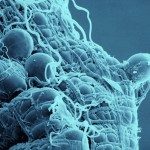Link to Pubmed [PMID] – 25655172
BMC Genet. 2015;16:11
BACKGROUND: Deciphering the genetic architecture of complex traits is still a major challenge for human genetics. In most cases, genome-wide association studies have only partially explained the heritability of traits and diseases. Epistasis, one potentially important cause of this missing heritability, is difficult to explore at the genome-wide level. Here, we develop and assess a tool based on interactive odds ratios (IOR), Fast Odds Ratio-based sCan for Epistasis (FORCE), as a novel approach for exhaustive genome-wide epistasis search. IOR is the ratio between the multiplicative term of the odds ratio (OR) of having each variant over the OR of having both of them. By definition, an IOR that significantly deviates from 1 suggests the occurrence of an interaction (epistasis). As the IOR is fast to calculate, we used the IOR to rank and select pairs of interacting polymorphisms for P value estimation, which is more time consuming.
RESULTS: FORCE displayed power and accuracy similar to existing parametric and non-parametric methods, and is fast enough to complete a filter-free genome-wide epistasis search in a few days on a standard computer. Analysis of psoriasis data uncovered novel epistatic interactions in the HLA region, corroborating the known major and complex role of the HLA region in psoriasis susceptibility.
CONCLUSIONS: Our systematic study revealed the ability of FORCE to uncover novel interactions, highlighted the importance of exhaustiveness, as well as its specificity for certain types of interactions that were not detected by existing approaches. We therefore believe that FORCE is a valuable new tool for decoding the genetic basis of complex diseases.

